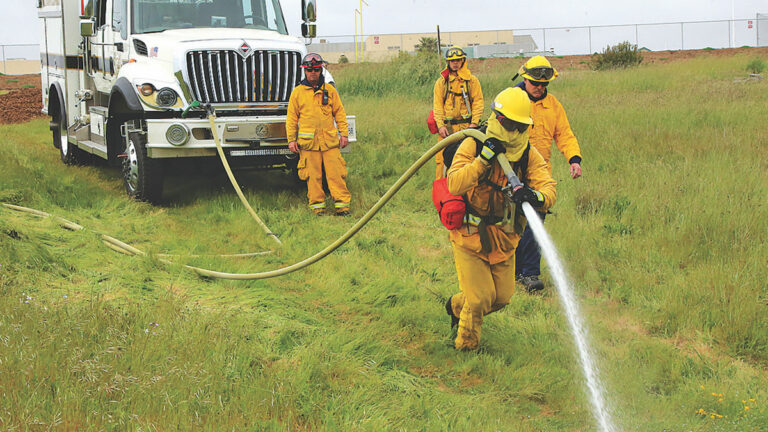Justin Wadstein began making pizza when he was only 13 years old. His parents owned a pizzeria near where he grew up in Fresno, Calif., and he spent hours watching as the shop’s employees threw and spun dough.
Inspired, a teenage Wadstein started spinning dish towels—then progressed to spinning binders at school and couch cushions in his living room. He bet his friends and classmates that he could spin anything.
In high school, he and a friend were at Walmart when Wadstein began throwing a plastic kiddie pool up above the aisles, attracting a crowd before an employee stopped him.
“It drove my parents crazy,” Wadstein laughs. “But I just always had to have something to do with my hands.”
Wadstein now holds 13 world titles in pizza throwing. He has won individual and team competitions in the U.S. and abroad, judged on everything from acrobatics to “fastest dough stretch,” where contestants must spin out five doughs as fast as possible.
Wadstein’s talents have garnered him worldwide attention and appearances on talk shows, game shows, “Ripley’s Believe it or Not,” and more. Most recently, he was featured on the new Fox prime time game show called “Game of Talents,” which premiered on March 10.
“The spinning started as a side hobby to what I was already doing, which was making pizza,” Wadstein says. “I wouldn’t have ever imagined what’s come of it.”
After graduating high school, Wadstein left Fresno for Santa Cruz, where his aunt was opening Kianti’s Pizza and Pasta Bar. He became the restaurant’s first spinner and trained other employees who have passed his technique down to this day. The spinning became a show at Kianti’s, attracting customers and giving Wadstein a creative outlet.
It was then that he was approached by a customer, who told him: “You should go to Vegas.”
Las Vegas is a mecca for pizza enthusiasts. Every year, it holds the International Pizza Expo, as well as numerous high-level competitions and presentations.
At 19 years old, Wadstein went to Vegas and ended up placing first in the U.S. and fourth in the world.
“I did a routine to a Huey Lewis song,” he says. “At the end … I acted like I was out of dough and then spun a folding chair in front of thousands of people. The crowd went crazy.”
Wadstein was invited to join the World Pizza Champions, a team of pros in the industry who travel to competitions and charity events. They took him to Italy—the birthplace of pizza—where he won competitions in Parma and Naples.
“When you go to Italy and win, the way they feel about pizza, on their turf … it’s a big deal,” Wadstein says.
Meanwhile, Wadstein continued to work at Kianti’s, then found a new home at local chain Pizza My Heart. It was there where he learned more about the business side of the industry.
“It helped expand my knowledge,” he says. “I learned about how to run a store, the ins and outs of general managing.”
Wadstein looks back on his time as a competitive pizza thrower fondly, and plans to continue to use his talents for more opportunities in television and film, which he says is another big passion.
“The lights, sets and overall magic of it is incredible,” he says. “I’ve always loved all sides of the film industry. To be able to take my talent and career to the screen has been a dream come true.”
But Wadstein is also looking to focus more time and energy on perfecting his culinary skills and expanding his business, Sleight of Hand Pizza. Founded in 2017, Sleight of Hand is a mobile outfit offering both food and entertainment. Prior to Covid-19, they worked parties, weddings, festivals and more.
“At one point I realized, even after traveling the world, all these awards … I wanted to do something for me,” Wadstein says.
At Sleight of Hand, Wadstein has learned even more about making pizza. Last year, he placed at the Real California Pizza Contest with his “Cali Crab,” made with pesto, mozzarella, preserved lemon, artichoke, Dungeness crab and triple cream, with a dough made from a 25-year-old fermented grape sourdough starter.
Wadstein says winning competitions like this means a lot.
“You do all these big shows, but a lot of pizza people will go, ‘Yeah, but can you make pizza? Can you make one that’s going to ‘wow’ me?’” Wadstein says.
Sleight of Hand had been booked for a string of Netflix events right before the pandemic canceled everything. The business has been able to do some small events and is looking to start things up again this month.
Wadstein continues to work on his skills at home during the closures, while helping his daughter with distance learning as his wife works as a manager at Hula’s Island Grill.
“We were luckier than most,” Wadstein says. “I’m truly thankful for my wife being able to fall back on that.”
Looking back, Wadstein says he feels incredibly fortunate to have made his hobby and passion into a career.
“As a kid, people would always ask, ‘Why do you spin everything? Why do you do that?’ And now I’m on TV, traveling,” Wadstein says. “But I didn’t believe back then I could do it. It’s been years of practice, and I’m still having to work to get to the next level. Dedication and hard work can go a long way.”
























